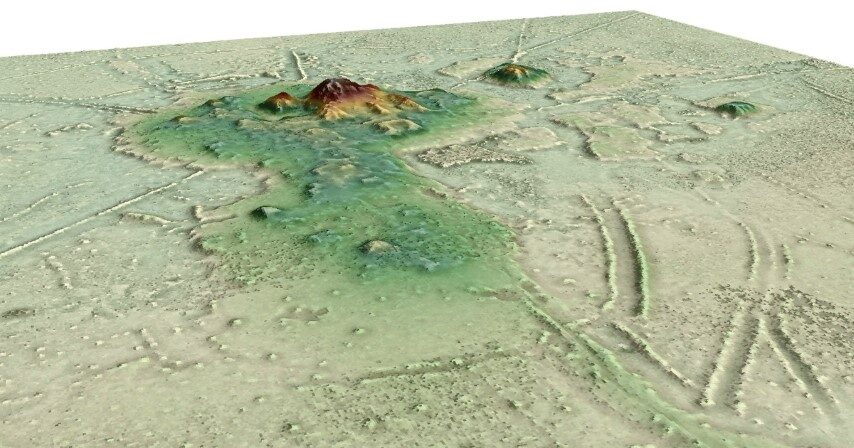What happened? Haven't scientists been exploring Amazonia for decades? Haven't orbiting spacecraft been watching every square mile of the Earth since the beginning of the space program? Yes: but there were designs in the Amazon jungles hiding in plain sight — signs of intelligence that would not have been noticed by a land explorer or orbiter measuring with ordinary cameras. The secret was revealed with a new imaging technology attached to a helicopter.
LIDAR Technology
The news from the University of Bonn, with photos, explains:
To find out more, the researchers used the airborne laser technology LIDAR (Light Detection and Ranging) for the first time in the Amazon region. This involves surveying the terrain with a laser scanner attached to a helicopter, small aircraft or drone that transmits around 1.5 million laser pulses per second. In a subsequent evaluation step, the vegetation is digitally removed creating a digital model of the earth's surface, which can also be displayed as a 3D image. "The first results were excellent and showed how effective the technology was even in dense rainforest. [Emphasis added.]When the measurements were in, and the vegetation cover was removed, large mounds, grids, and other structures came to light. Out go previous notions of Amazonia as a "green desert" mostly untouched by man except for temporary huts inhabited by scattered hunter-gatherers.
LIDAR mapping reveals the architecture of the settlement's large squares. Stepped platforms topped by U-shaped structures, rectangular platform mounds, and conical pyramids (up to 22 meters high). Causeway-like paths and canals connect the individual settlements and indicate a tight social fabric. At least one other settlement can be found within five kilometers of each of the settlements known today. "So the entire region was densely settled, a pattern that overturns all previous ideas," says Carla James Betancourt, who is a member of the Transdisciplinary Research Area "Present Pasts" at the University of Bonn.It was amazing to see these remains for the first time, team members said. Archaeologists believe the structures were built between 500 and 1400 AD by a mysterious tribe called the Casarabe. Nature News says that conventional methods might not have revealed these things.
Previous digs had revealed that these 'forest islands' contained traces of human habitation, including the remains of the mysterious Casarabe culture, which appeared around ad 500. During one excavation, Prümers and his colleagues realized that they had found what looked like a wall, indicating that a permanent settlement had once occupied the area. The researchers also found graves, platforms and other indications of a complex society. But dense vegetation made it difficult for them to use conventional methods to survey the site.The paper in Nature by Prümers et al., "Lidar reveals pre-Hispanic low-density urbanism in the Bolivian Amazon," is open access for those wishing to delve into the details of this interesting discovery.
Suffice it to say that intelligent designs can exist in plain sight. Steganography is the art of passing signals between parties such that an observer might not detect the message, even if watching both parties communicate. Messages can be encoded within JPG files or music files, for instance, that are undetectable without the code key. A fun example can be seen by staring at the stereograms popular in the 1990s. Only by looking past a flat, repetitive background can hidden figures be seen. Click this link for easy examples to try, and this link for difficult ones to try. Some people succeed right away; others have a hard time.
The Lesson
In short, both the technology and the angle of observation can overturn a false negative ("nothing to see here; move along"). While the design filter might goof on a false negative sometimes, like mistaking a work of art for an accident, William Dembski's work (No Free Lunch) argues that a properly constructed design inference is robust against false positives ("I see a design!" where nothing exists).
But there's another angle on this story. Suppose no archaeological structures had been found in the Amazon site by LIDAR or by ground observation. Could the researchers rule out a design inference? Think about it.
Well, if they looked into the cells of a leaf on a tree, there would have been overwhelming evidence of intelligent design!




Reader Comments
"I'm shocked...I tell you shocked...to find evidence of prior civilizations in the Amazon!! Just shocked!!"
Seems no one here as a stomach for it.